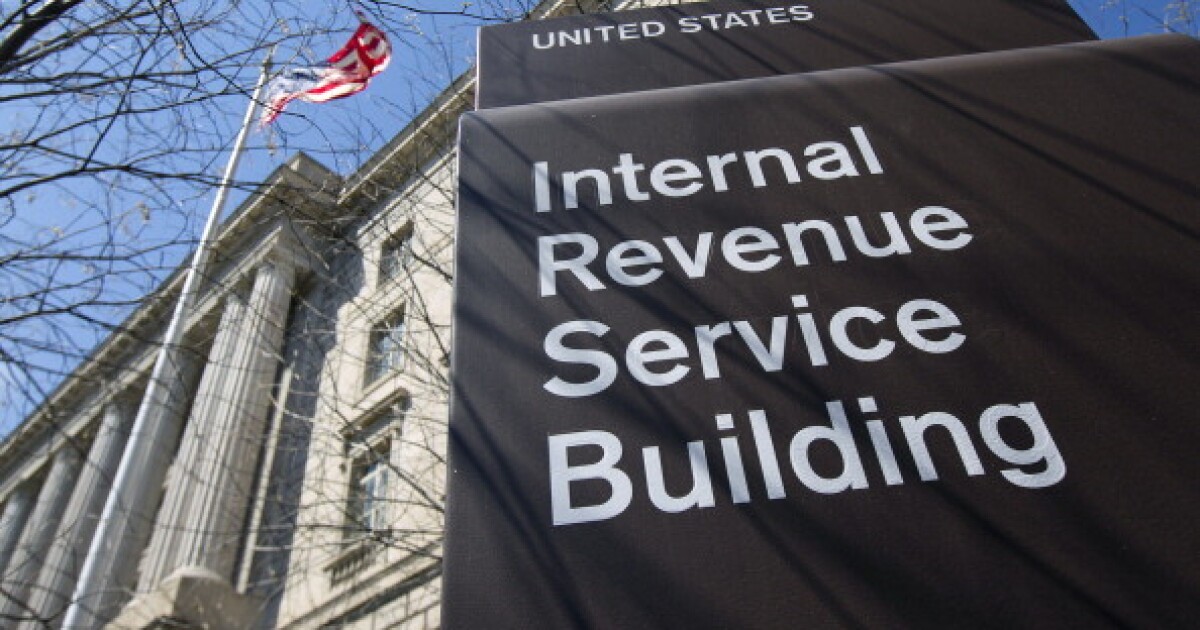Republican leaders say they are getting close to agreeing on a plan to pass an extension of President Donald Trump’s 2017 tax cuts and an increase to the debt ceiling, as Congress looks to approve an economic package by the end of May.
“I don’t want to get out in front of what the Senate is going to do. But it sounds like we will not be far apart, and that’s a good thing, so we’ll be able to move,” House Speaker Mike Johnson told reporters, following a meeting at the Treasury Department on Tuesday.
Johnson said the Senate was “coming around” to supporting a debt ceiling increase as part of the legislation. Senate Majority Leader John Thune said he believes “there’s consensus forming around” the debt ceiling plan, an issue that had been a key sticking point between the two chambers for weeks.
A House plan, approved earlier this month, calls for lifting the debt ceiling by $4 trillion as part of the tax legislation, an idea Senate Republicans have been slow to embrace.
Deep divisions still remain among Republicans with at least two Senators — Josh Hawley of Missouri and Tommy Tuberville of Alabama — saying they don’t support the House plan because it could cut Medicaid and other health programs their constituents use.
Senator Rand Paul, a Kentucky Republican, said he’d never vote for the tax package if it contained a debt ceiling increase.
Including the debt ceiling language in the tax bill puts pressure on the party to pass the legislation before the government runs out of room to keep paying its bills on time, which economists anticipate will hit this summer or early fall unless Congress steps in.
House lawmakers say they intend to move even quicker, with a goal of approving the tax cut legislation before the Memorial Day weekend. That’s an ambitious timeline given the remaining divisions within the party and narrow majorities in each chamber that mean the GOP will largely need to stick together to pass the bill.
Republicans are hoping to score a legislative win to soothe markets that have been roiled by the haphazard rollout of Trump’s tariff policies. Party leaders have warned that failing to extend the 2017 tax cuts, which expire at the end of the year, for individuals and privately held businesses could upend markets and economic expectations.
“We have to bring stability to the market,” Johnson said earlier Tuesday, adding that negotiators need to give people certainty so they can “make decisions about expanding their businesses and jobs.”
Treasury Secretary Scott Bessent, along with Trump’s National Economic Council Director Kevin Hassett, hosted the meeting of the so-called “Big Six” tax negotiators at the Treasury Department with Thune and Johnson. Senator Mike Crapo and Representative Jason Smith, who chair the tax committees in each chamber, also attended.
Bessent, in a readout of the meeting issued by the Treasury Department, said it was a “productive meeting” that “gives me confidence that a swift timeframe is achievable.”
Bridgewater Associates founder Ray Dalio warned House Republicans earlier Tuesday of the dangers of rising U.S. deficits. House lawmakers said it reinforced their push to offset any new tax cuts with spending reductions, according to lawmakers who attended a private meeting with the former hedge-fund manager. Those spending cuts, including potential reductions to Medicaid, are making some GOP senators squeamish.
There’s also opposition in the House, where Republicans hold an extremely narrow majority. Representative David Schweikert, an Arizona Republican, has repeatedly warned the tax bill should be offset with spending cuts or other revenue raisers, in order to lower federal debt loads. That view is not particularly popular among the GOP leadership.
To get a tax package passed by the end of May, House and Senate negotiators will have to settle on a shared approach. Thune set the week of April 7 as the deadline for the Senate to pass a budget resolution outlining the tax cuts.
House Republicans passed their version of a tax blueprint earlier this month that agreed to $4.5 trillion in tax cuts along with $2 trillion in spending reductions. But Senate Republicans want to change the blueprint to add trillions more in tax cuts without more spending cuts.
Republicans must also align on the overall size of the package, which tax elements to include and how to offset the cost of the cuts, a dynamic that is sure to pit fiscal hawks against members seeking tax breaks.


 Economics1 week ago
Economics1 week ago
 Accounting1 week ago
Accounting1 week ago
 Economics1 week ago
Economics1 week ago
 Blog Post4 days ago
Blog Post4 days ago
 Economics1 week ago
Economics1 week ago
 Personal Finance1 week ago
Personal Finance1 week ago
 Economics5 days ago
Economics5 days ago
 Personal Finance1 week ago
Personal Finance1 week ago












